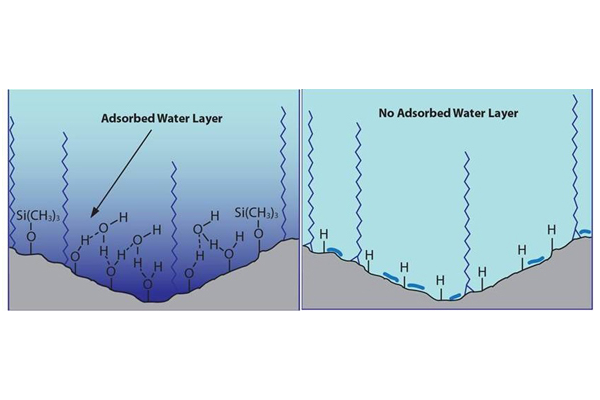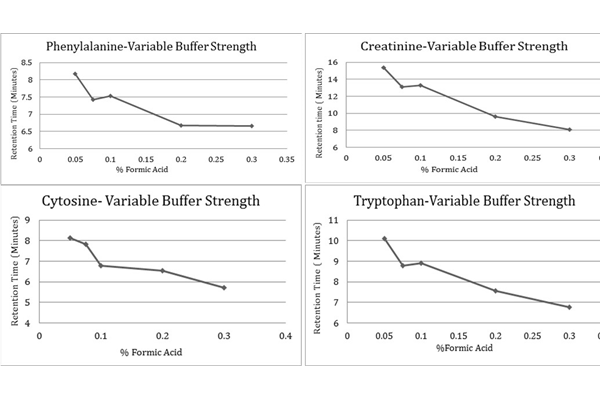Aqueous Normal Phase ANP can replace HILIC in HPLC and LCMS, with benefits – Tips & Suggestions
Over the years, many chromatographers have been given the task to develop HPLC and LCMS methods for highly polar compounds. Those who have chosen HILIC columns have reported gradient methods can be problematic causing frustration, excessive method development time and additional costs. Mostly the issues are the “downtime” between runs that HILIC and all ordinary silica columns struggle with including equilibration of the on-column, silica water layer.
The permanent water layer or “hydration shell” causes difficulty maintaining precision and reproducibility especially after several runs or when laboratory conditions such as temperature changes. It’s also reported that the HILIC column lifetime can be short and the columns can fail without notice during over night runs.
High salt concentrations in the mobile phase (up to 100 mM) is often needed in HILIC to get proper retention times which can be a problem for LCMS instruments and preparative chromatography.
ANP or Aqueous Normal Phase HPLC is similar to HILIC in that polar compounds are retained and separated using high organic content mobile phases as a starting point and running an inverse gradient (high organic to high aqueous). A difference in that Cogent TYPE-C HPLC columns do not retain a water layer , does not have more than 5% residual silanols and utilizes direct silicon carbon bonds for ligands, the problems most often associated with HILIC are eliminated. Low salt concentrations are used in ANP (ie 15mM or less) and no buffering is needed thus avoiding all the problems of high salt concentrations in LCMS and preparative chromatography.
Some Benefits to Chromatographers using ANP v. HILIC:
- Faster Equilibration between runs (3-5 column volumes).
- Gain more Throughput per instrument, save on Cost of Solvents.
- Precision is Extraordinary run to run, day to day.
- More Confidence in your data, better for GMP and regulated laboratories.
- Column Lifetime increased over HILIC columns.
- Fewer failures during runs, lower cost, Budget Saver.
- Lower Salt needed for retention.
- Low Salt will not fowl the inlet of LCMS and offers faster recovery of Prep Samples.
- ANP can retain Polar & some non-Polar Compounds.
- Wider selectivity range, Fast Method Development.
Notes:
- Less than one Monolayer of Water on Cogent TYPE-C columns vs. 3-12 layers on HILIC materials leading to less variability in surface composition and hence greater Precision in analyte retention.
- Rapid Equilibration of the stationary phase after gradients, typically in the range of 3-5 column volumes for Cogent TYPE-C Columns.
- Negatively Charged Surface on Silica Hydride due to free, surface Hydroxide ions.
- Difference in Selectivity and Enhanced Retention in ANP.
- Ability of Cogent TYPE-C Columns to Function in Reversed-Phase HPLC Mode.
- Excellent run to run and column to column Reproducibility with Cogent TYPE-C Columns.
- No need for high Concentrations of Additives in the Mobile Phase; only 15mM or less required for most Hydrophilic Compound Analyses in ANP.


